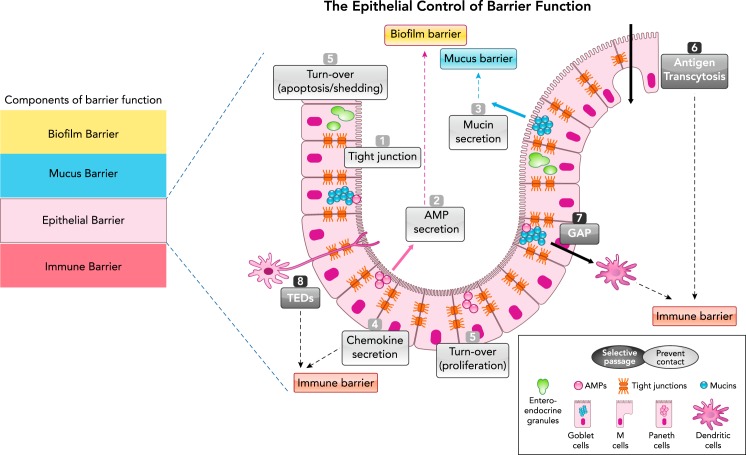FIGURE 1.
Schematic representation of the epithelial barrier in the GI tract
Components of the intestinal barrier (left) and specifically the epithelial control of barrier function (right). The epithelial monolayer is composed of different cell types (represented here are Goblet cells, Paneth cells, and M cells), which exert barrier function either by preventing physical contact or by allowing selective passage of molecules. The physical barrier organized by the epithelium is composed of the tight-junction molecules (1), the secretion of antimicrobial peptides (AMPs; 2), the secretion of mucins (3), the secretion of chemokines that alert the immune barrier (4), cell turnover (equilibrium between shedding and proliferation; 5). Selective passage of antigens is ensured through M-cell transcytosis (6), Goblet cell antigen passages (GAP; 7), and transepithelial dendrite (TEDs) (8) pathways.

